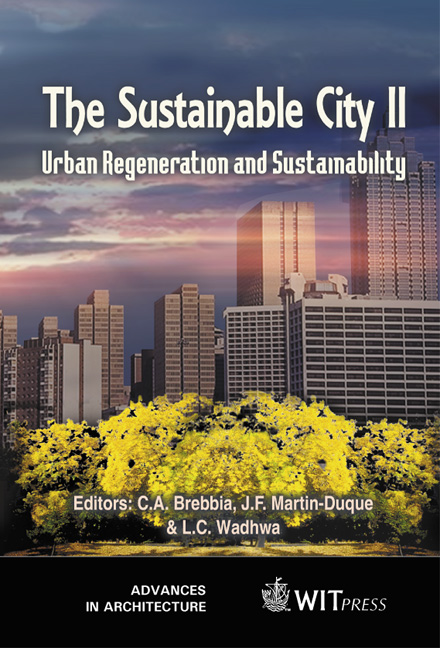Comparison Between Conventional And PV Integrated Curtain Wall Systems
Price
Free (open access)
Transaction
Volume
54
Pages
Published
2002
Size
507 kb
Paper DOI
10.2495/URS020981
Copyright
WIT Press
Author(s)
H. Sozer & M Elnimeiri
Abstract
In today’s world, we are becoming aware of the importance of reducing fossil fuel-driven consumption by buildings. The building industry is pursuing other energy alternatives to promote sustainable and environmentally conscious architecture. PV systems are one of the most promising technologies for the building industry and can be considered as a very viable alternative. Renewable energy conversion systems, such as PV curtain wall, improve the environmental aspects of the building, while reducing fossil fuel energy consumption. It has not yet been determined, how equivalent PV Curtain wall systems are in terms of building performance qualities when compared with conventional curtain wall systems. Issues such as heat gain characteristics, cost of the wall system and building operating costs reduction, must be addressed before curtain wall systems can be considered as replacement materials by the construction industry. These uncertainties create a gap between PV technology and construction industry slow down the process of full integration of PV into the curtain wall system and make PV technology less eminent limiting its applicability. Discussion under the following categories to show its equivalency to other conventional curtain wall systems: The advantages and disadvantages of PV curtain wall systems in reference to the above mentioned categories will be discussed in this paper. 1 Introduction Curtain wall systems are prefabricated elements that usually integrated with the exterior of the buildings providing the protective skin. This skin could have openings for vision and ventilation. As a facade of a building, the curtain wall
Keywords





